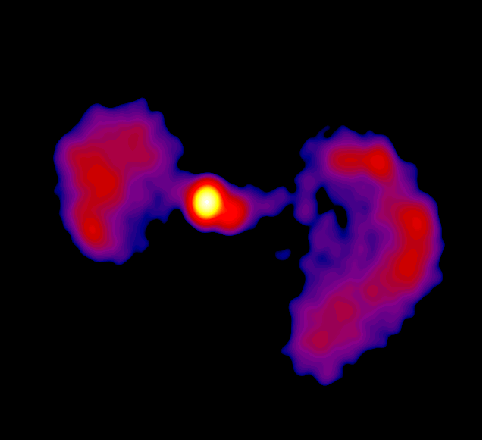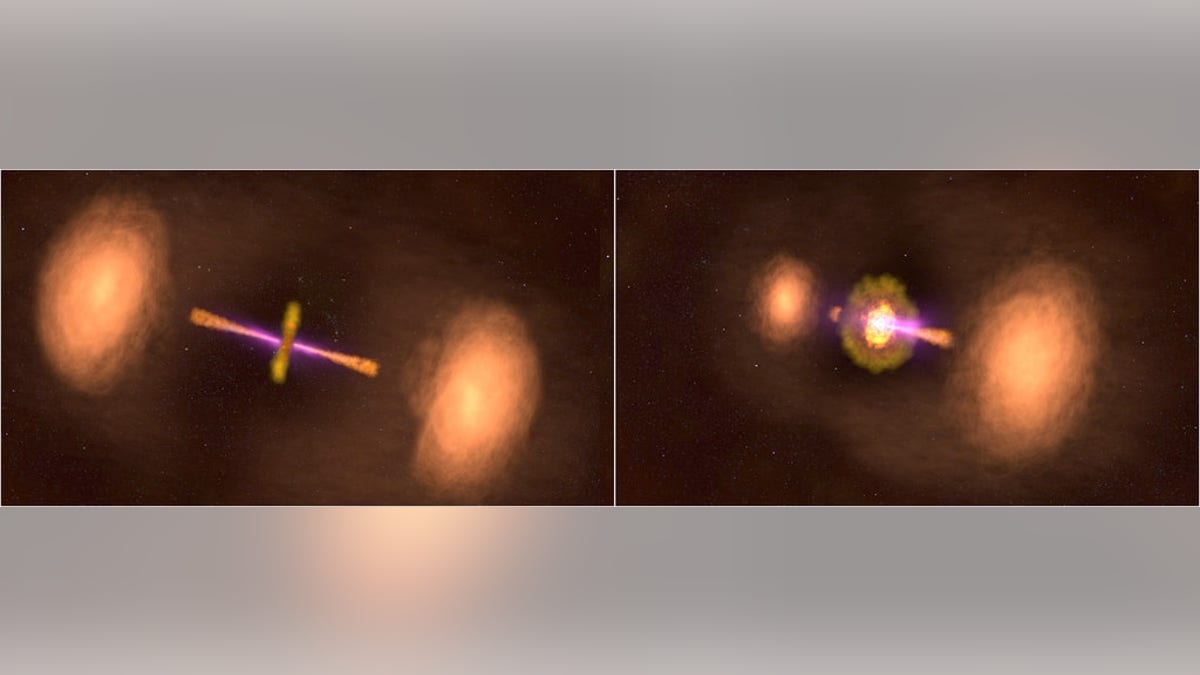Fox News Flash top headlines for August 27
Fox News Flash top headlines are here. Check out what's clicking on Foxnews.com.
NASA has found an active galaxy far, far away that looks eerily reminiscent of a TIE fighter from "Star Wars."
The galaxy, known as TXS 0128+554, is 500 million light-years away in the constellation Cassiopeia. TXS 0128+554 is considered an active galaxy, as it emits more light than all of its stars together. In 2015, researchers found TXS 0128+554 was a "faint source of gamma rays," but it wasn't until recently that they went in for a closer look.
“After the Fermi announcement, we zoomed in a million times closer on the galaxy using the [Very Long Baseline Array's] radio antennas and charted its shape over time,” said Purdue University professor and study lead author Matthew Lister in a statement. “The first time I saw the results, I immediately thought it looked like Darth Vader’s TIE fighter spacecraft from ‘Star Wars: Episode IV – A New Hope.’ That was a fun surprise, but its appearance at different radio frequencies also helped us learn more about how active galaxies can change dramatically on decade time scales.”

This image shows TXS 0128 at 15.4 gigahertz as observed by the Very Long Baseline Array (VLBA), a globe-spanning network of radio antennas. The colors correspond to the radio signal’s intensity, from low (purple) to high (yellow). Credits: NRAO
THE UNIVERSE WILL END IN THIS WAY, AT THIS TIME, RESEARCHER SAYS
TXS 0128+554 has a "supermassive black hole" that is believed to be 1 billion times the sun's mass, which may provide a reason for the gamma-ray emissions.
The galaxy is also producing two jets, "beams of high-energy particles traveling at nearly the speed of light in opposite directions," that give it the TIE fighter-like appearance. It's believed these jets may be producing some of the gamma-ray emissions.
The researchers used NASA's Fermi Gamma-ray Space Telescope and the Chandra X-ray Observatory to look at the galaxy to get a better idea of what it looks like.

This illustration shows two views of the active galaxy TXS 0128+554, located around 500 million light-years away. Left: The galaxy’s central jets appear as they would if we viewed them both at the same angle. Right: The galaxy appears in its actual orientation, with its jets tipped out of our line of sight by about 50 degrees. (Credit: NASA's Goddard Space Flight Center)
“The real-world universe is three-dimensional, but when we look out into space, we usually only see two dimensions,” study co-author Daniel Homan added. “In this case, we’re lucky because the galaxy is angled in such a way, from our perspective, that the light from the farther lobe travels dozens more light-years to reach us than the light from the nearer one. This means we’re seeing the farther lobe at an earlier point in its evolution.”
'MILKY WAY LOOK-ALIKE' GALAXY FOUND 12B LIGHT-YEARS FROM EARTH
The research has been published in The Astrophysical Journal.
TXS 0128+554 is not the only "Star Wars"-linked discovery in space in recent memory.
In June 2016, exoplanet Kepler-1647 b was discovered 3,700 light-years from Earth. It is part of a double-star system, similar to Luke Skywalker's planet, Tatooine. Three years later, exoplanet LTT 1445 A b and its three stars were discovered.
Researchers discovered what they described as "the first volcanically active exomoon" in August 2019, a celestial body eerily reminiscent of the tiny, fiery "Star Wars" planet, Mustafar, where Anakin Skywalker turned into Darth Vader.




















